I have been into succulent gardening for over a decade now. Zebra plants (Zebra cactus) are my favorite choice due to their striking striped appearance.
Growing and caring for haworthia species is a no-brainer task. But different types of zebra plants have distinct care requirements.
I wrote this article guide to share my tips for identifying these haworthia species. Take the time to read through the haworthia zebra plant benefits with their respective care requirements.
Different Types of Zebra Plants with Pictures
Zebra plants (Zebra cactus) are excellent succulent plants for sunny indoors and bright window sills. These succulent plants are further sub-divided into small sections for easy identification.
Haworthia attenuate
These succulents are also called zebra haworthia or zebra plants. These low-growing succulents are attractive due to the dark green foliages with white tubers. These zebra plants also produce flowers.
Haworthia Glabrata
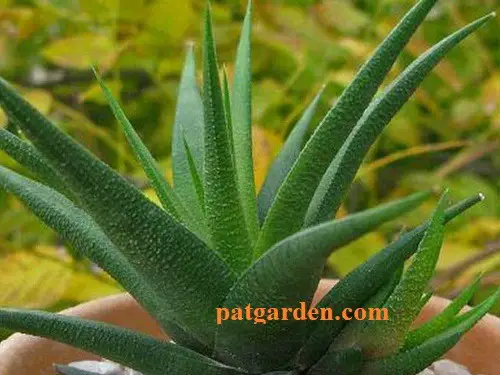
It is a small succulent plant with tough rosettes of light to dark or brown-green colors. The coloration of these fleshy and narrow leaves depends on the lighting condition.
The tubercles covering the succulents have the same color as the leaves. The white blooms with green veins appear during the spring and fall seasons.
The hwaorthia species is non-toxic to humans and pets. The succulent plant hails from South Africa (Cape Province).
Hankey Dwarf Aloe

It is a compact species with a rosette of green to brown foliages covered with white bumps on both sides. The rosettes can reach six inches tall with numerous tubercles.
It produces white flowers with reddish-brown veins during the spring and fall seasons. These inflorescences can reach twelve inches tall.
This haworthia species hails from South Africa (Eastern Cape Province). Stem cuttings and offset removal are reliable propagation methods.
Haworthia Radula Variegated
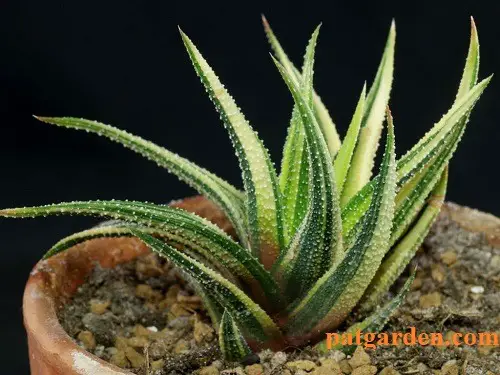
It is a beautiful succulent that forms a rosette of fleshy variegated leaves. The mottled foliages have uneven patterns of creamy-white, yellow, or pink variegations with white bumps.
The succulent produce offsets and grows in clumps. These rosettes can grow up to six inches tall and produce white flowers with reddish-brown veins from spring to fall.
The haworthia species is non-toxic to pets and humans. It can tolerate full sun though I recommend growing in semi-shaded spots.
Haworthia Enon
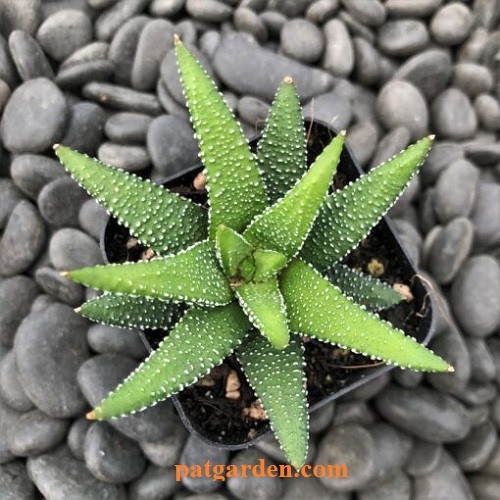
It is a dwarf succulent with chubby and stubby rosettes. The succulent has firm green foliages with white spots o both sides that are susceptible to change due to stress.
It produces small white flowers during the summer season. It is a perfect succulent for windowsills and warm climate landscapes.
Haworthia Fasciata
These are small-size succulent species with a maximum height of 4-6 inches. They have green triangular leaves with narrow white-tipped stripes on the outside.
Big Band
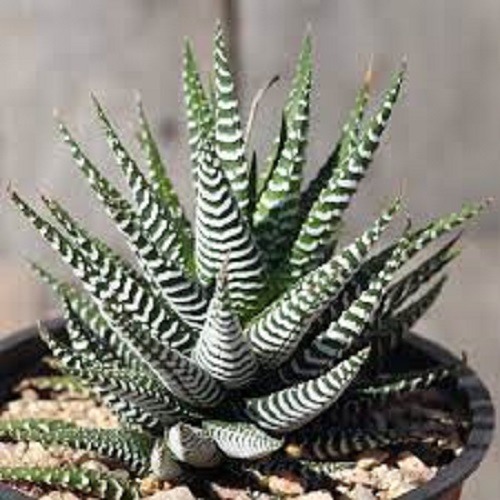
It is a clump-forming evergreen perennial with attractive broad white stripes over the dark green fleshy leaves. This haworthia species resembles a miniature aloe except in the flowers.
The succulents produce flowers during the summer season. Removing offsets is the ideal method for propagating big band succulents.
Super White Zebra
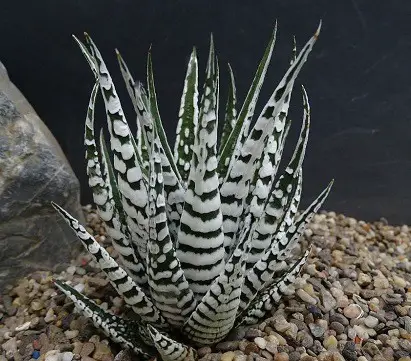
The succulent species has white bumps on the outer side of the plumped green foliages. The white bands are conspicuous and give the zebra skin appearance.
The super white zebra plant produces tubular white flowers during the summer season. The zebra plant cultivar is non-toxic to humans and pets.
Alba Haworthia Species
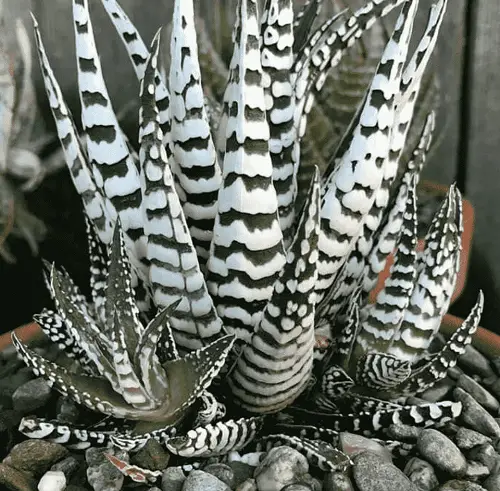
The haworthia species has green fleshy leaves with white-green streaks on the outside. These white bands make the species have a zebra-like appearance.
It has a compact design that suits mini pots since it can reach eight inches tall and eight inches wide. It generates white flowers during the summer season.
Royal Albert
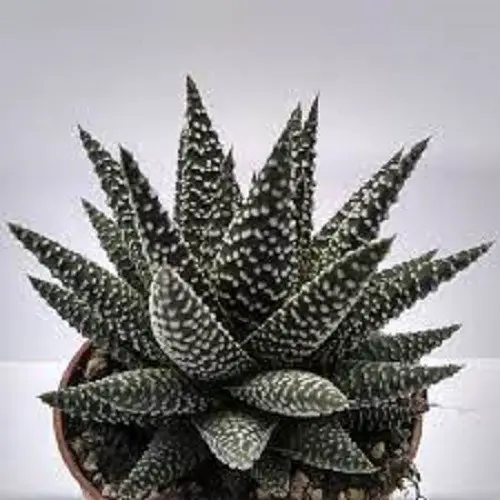
The haworthia species has a cluster of dark black-green pointed leaves with raised white tubercles on the surfaces. The small green rosettes make this species conspicuous.
The succulent species are hardy and can tolerate drought for an extended period. It thrives well in sunny areas and hails from South Africa.
Haworthia Pumila
It is a group of pearl succulent plants with slow-growing characteristics. They produce stunning rosettes of olive-green to brown triangular leaves covered with white bumps. The tubular brown-white flowers appear during the summertime.
Donut
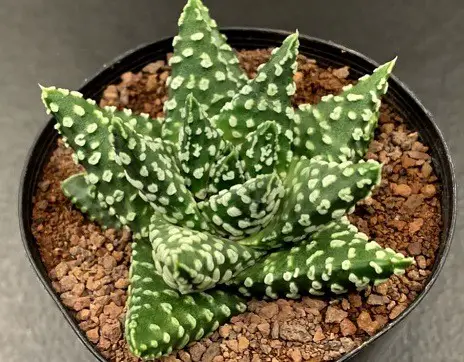
It is a small and attractive succulent plant with rosettes of green leaves covered with donut-shaped tubercles. The fleshy foliages are tough, pointed, upright, and incurved.
Donut succulents are non-toxic to humans and animals. Seeds and offsets are the most reliable propagation methods, and they prefer semi-shaded spots to thrive well.
Emperor
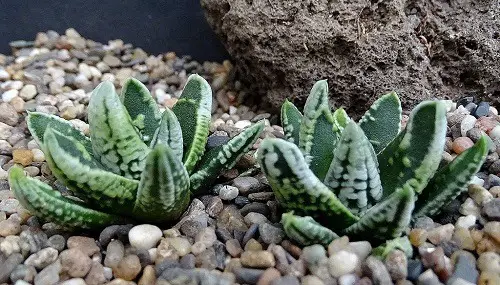
The haworthia species have long and pointed fleshy green leaves with uneven raised pure white spots. The rosettes can reach three inches tall with tubular white or brownish flowers.
The emperor’s succulent plant has tough, upright, incurved, and pointed foliages. It is non-toxic to humans and animals. Besides that, it prefers semi-shaded regions to thrive well.
Tears of Angels
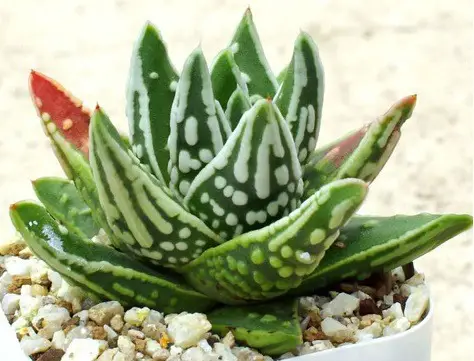
It is a beautiful succulent that forms small rosettes of green leaves with white-irregular bumps. It has upright, tough, pointed, and incurved foliages.
The species is also known as Tenshi no Namida and prefers semi-shaded regions. It is non-toxic to humans and animals.
Haworthia Reinwardtii
The zebra wart succulent is a small perennial variety with basal rosettes of fleshy leaves. these foliages have spiral pattern arrangement with raised white bumps. A cluster of pink-white flowers appear during the spring season.
Haworthia conspicua
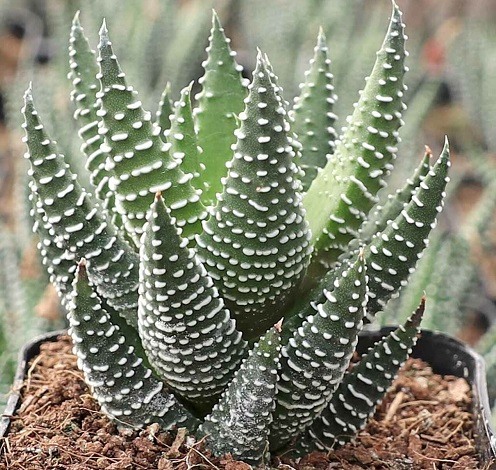
The succulent cultivar has many upright columnar leaf-clad stems from a basal offset. It has dark green foliages with white tubercles, and direct sunlight exposure will result in red-brown hues.
The haworthia species produce tubular bell-shaped flowers during the spring and summer seasons. It is non-toxic to humans and animals.
Tulista Minima
It is a small stemless succulent forming solitary rosettes of hard and fleshy blue-green foliages covered with white bumps.
Tulista Breuer
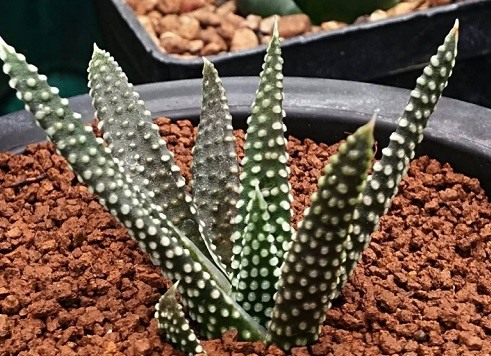
It is the most attractive succulent species due to the shiny transparent tubercles. It is a slow-growing rare succulent with rosettes of hard and fleshy light green leaves.
The succulent cultivar hails from South Africa and loves full sun exposure. The succulent is non-toxic to humans and animals.
Haworthia Coarctata
It is a group of succulents that form large clumps in their native habitat. Most species have dark green foliages that can attain rich purple-red hues under full sunlight exposure.
Coarcata

The species has small, smooth, and round white tubercles on the wide leaves. It also forms large clumps of long stems covered in robust succulent dark green leaves and white ribbing.
Coarctata succulents hail from South Africa and Mexico. The haworthia species is non-toxic to humans and animals.
Haworthia Limifolia
These haworthia species are also called File Leafed Haworthia. They have broad, triangular, and ovate dark green leaves with raised bumps.
Haworthia limifolia var striata
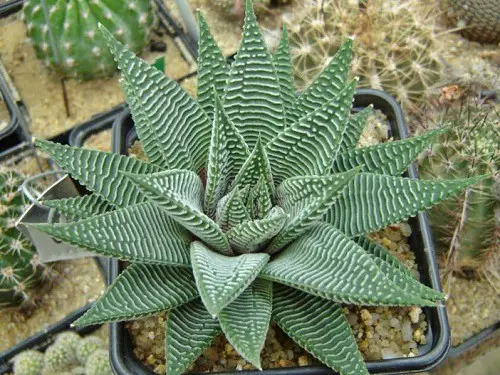
The succulent species has deep ribs and grooves highlighted by white shade. These features and coloration make this haworthia limifolia species the most beautiful.
The rosettes grow up to four inches wide and produce white flowers with green veins. This ornamental succulent hails from South Africa and is non-toxic to pets.
Fairy Washboard
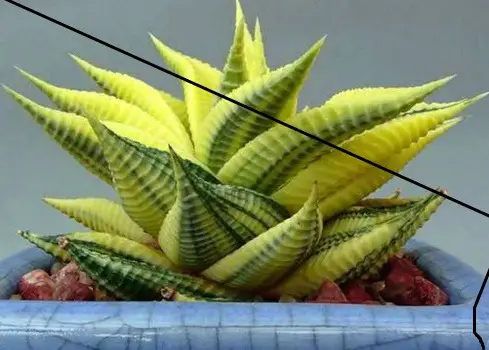
It is a charming file leafed haworthia with variegated leaves. The rosettes have triangular to ovate foliages with green and cream hues.
The rosettes grow up to four inches wide and produce tubular white flowers. The bloom is not showy and emerges in a cluster on a up to 14 inches tall stem.
Other Zebra Plant Varieties
Crosby’s Prolific
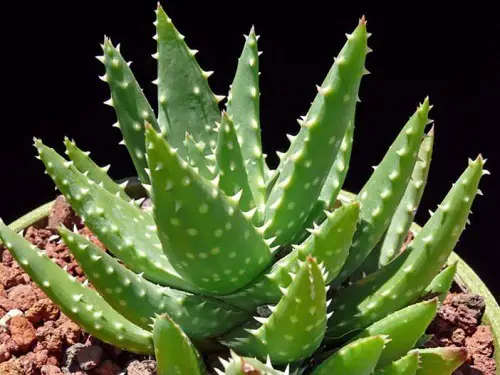
It is an attractive aloe that forms a rosette of deep green foliages with serrated edges and raised white spots. Direct sunlight exposure will make the rosettes turn orange-red.
The aloe has long translucent marginal teeth, and offsets come from a large clump. The tubular flowers emerge from the flowering stalk that grows up to 18-inches long.
Lace Aloe

It is a slow-growing aloe that produces triangular succulent lanceolate leaves forming rosettes around the plant base. The fleshy leaves are green with yellowish-white spots and serrated edges.
The aloe species can grow up to 6-12 inches tall, and rosettes spread two feet wide. The species is non-toxic to humans and animals.
Tiger Aloe

It is among the most beautiful aloe varieties due to its small fat foliages with white streaks on green leaves. The succulent has 18 to 24 smooth dark-green or brown leaves arranged in 3 ranks.
Tiger aloe or gonialoe variegeta can grow up to 12 inches tall and 9 inches wide. The foliage marginal have white teeth, and the succulents produce large flowers.
Somalian Aloe
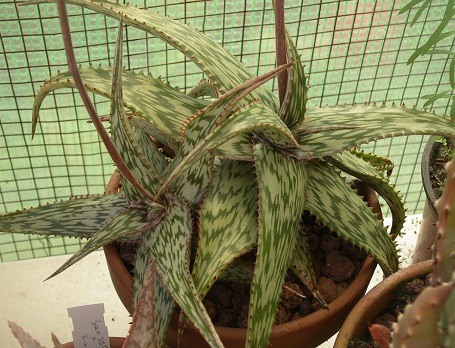
This beautiful ornamental aloe has fleshy leaves with green and white patterns. The fleshy leaf margin has long teeth and hails from the Somaliland Republic and Djibouti.
The tubular flowers are pale-pink to red and appear during the summer season. The aloe species is slightly toxic to humans and animals.
Zebra Plant

The plant foliages have bold white-colored veins that look amazing on the dark-green leaves. It brings exotic zebra vibes in a bland space.
Growing and caring for zebra plants can be challenging for beginners. The species is vulnerable to losing its leaves and becoming leggy.
You May Also Like
- Why Are My Zebra Plant Leaves Drooping?
- Why Are the Leaves on My Zebra Plant Crispy?
- Why Are My Zebra Plant Leaves Curling?
- Why Are My Zebra Plant Leaves Turning Yellow?
- Why Are My Zebra Plant Leaves Turning Brown?
- Why Are My Zebra Plant Leaves Falling Off?
- Why Are There Brown Spots on the Leaves of My Zebra Plant?
